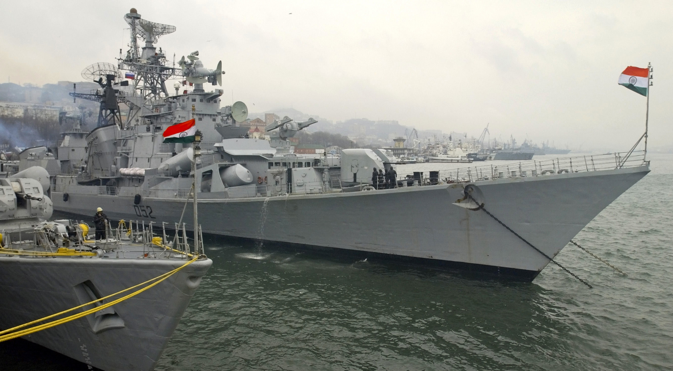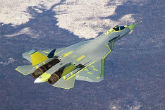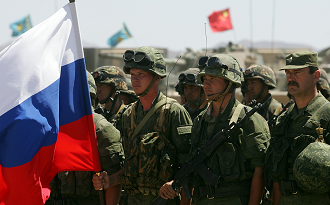Concern Agat looks at increased cooperation with Indian Navy

Georgy Antsev: "The nature of the strategic partnership between our countries permits us to share with our Indian partners the state-of-the-art design and solutions." Source: Press Photo
One of the Russia’s largest defence holdings, Concern Morinformsystem-Agat was formed a decade ago as an umbrella organisation for various government enterprises engaged in designing, manufacturing and maintaining technical readiness of the whole range of radio-electronic systems that are subsequently installed in control centres, on ships and units of the Russian Navy.
The organisation engages in a wide range of works - from manufacturing radar and sonar systems to designing the so called Combat Information and Control Systems (CICS) that control all kinds of maritime strike missile and artillery weapons, ship-borne and ground-based.
Among export products produced by Scientific Production Association Agat, the core enterprise of the Concern, and other enterprises under Agat umbrella, are Club-S and Club-N Missile Ship-borne Firing Control Systems for submarines and for surface ships respectively, MR-123 and Puma (5P-10) Artillery Systems, radar Stations, combat Information and control systems for surface ships and submarines and Bal-E coastal missile systems.
Georgy Antsev, General Director and Chief Designer of Concern Morinformsystem-Agat, talked to RIR about Russia-India cooperation in the naval domain and the new opportunities this cooperation promisesfor the organisation.
What are today’s international priorities of the Сoncern - what regions are you focusing on and what products are you offering to international customers?
Concern Morinformsystem-Agat as a whole has been functioning since 2004 - for less than 10 years. It is not the age for a major defence holding to talk about large-scale international activity. Nevertheless I can say that we have a head start in this field. Our enterprises (there are 15 of them in total, some of them being older than 50 or, even 100 years) have vast experience of cooperation with foreign partners. In this regard the holding as a whole will have to learn from its current subsidiaries and adopt their experience.
Today within the framework of the Russian state policy on military technical cooperation with foreign nations our Concern offers military equipment to quite a few Asian, African and Latin American countries both separately and already installed on the ship. Concern and its enterprises have contractual obligations with countries like India, Vietnam, Algeria, the CIS and many others. That being said, of all the countries listed above India has always been our top-priority partner, with whom we cooperate in both military and civil sector.
Can you shed some light on current projects with India? Out of various products and technologies Agat can offer, what can be of interest to India particularly?
I suppose today we are witnessing a fundamental change in the approach of the Indian government and its navy authorities towards equipping combat ships. Nowadays it is impossible to woo India just with lower prices and a flexible offset policy.
India wants to acquire and install the equipment, but, more importantly, it wants to adopt the technology and access engineering solutions and design development. At this stage Agat can offer quite a few technical solutions as well as cooperation patterns.
India is a special customer for us. On one hand, the potential of the Indian defence industry, especially its IT-specialists, is great and keeps growing with every passing year. On the other hand, the nature of the strategic partnership between our countries permits us to share with our Indian partners the state-of-the-art design and solutions. Therefore, the most interesting for the Indian customer would be complex combat management integrated systems for surface ships and submarines based upon acquisition and processing of data from different sources, including space vehicles, aircrafts, radars, acoustic means (ship-borne and stationary) and operation centres for the navy. We are open for a mutually rewarding dialogue, but you have to understand that such complex systems are of special interest to any country and details of specific negotiations cannot receive wide coverage in the media.
Related:

Harder than rock: Russian composites on their way to India
NLMK plans to increase steel supplies to India
India purchases licence to manufacture Invar anti-tank missiles
Agat-designed systems among other missiles use the BrahMos missiles jointly produced by Russia and India. Did Concern participate in theBrahmos Aerospace JV between two countries?
Our Concern participated in the BrahMos program indirectly: it handled the development of the Russian equivalent and the prototype of the BrahMos missile. However we have vast experience in designing unified missile control systems that use missiles produced by the MIC NPO Mashinostroeniya JSC, the partner of BrahMos JV from the Russian side. Today we have projects of joint use of the first series of the Club missile systems, supplied by Russia to the Indian Navy for Talwar type frigates. By the way, our Concern manufactures its fire control system. In case the decision is taken in our favour the Concern’s technical potential and cooperation experience would come in handy.
Which of your systems are currently used by Indian Navy?
I’d like to mention that India is the first country in the world that received the Club missile system. The very name "Club" came up during negotiations with the representatives of the Indian Navy. Only after that was the system with the "Indian" name bought by the navies of other countries and became a full-fledged brand with a lot of modifications.
Without false modesty we can say that at present the majority of the Indian Navy surface ships and submarines are equipped with our products. Today it’s not only Russia-produced ships, but also those manufactured in India. Shivalik and Talwar class frigates, Delhi and Kolkata class destroyers, Kilo class diesel-electric submarines and, naturally, Chakra class nuclear submarine. And here, we mean not only the above mentioned general-purpose firing system 3R-14UKSK and the Club-U missile system, but also our radar systems, missile and artillery weapons control systems, CICSs for surface ships and submarines.
As for the Club-U, it's no coincidence that the Indians have chosen this modification, since the system can be supplied with Indian missiles PJ-10, developed by the Brahmos JV.
Do you consider the possibility of establishing a JV with Indian companies, as some other Russian companies have done in recent past, for example, in order to manufacture modifications of your systems in India directly? Or you prefer following traditional tender system?
We consider all opportunities of potential cooperation with the Indian partners. Participation in supply tenders is a conventional, trusted and, I suppose, easier option. A JV would mean that we are ready to settle in the Indian market, which is per se a very attractive idea as a JV can be established not only to manufacture modifications of our systems on the Indian territory, but to support the life-cycle of the products supplied by the Concern, specifically its repair, modernization, personnel training etc. On the other hand, before launching a JV we need to thoroughly study local market conditions and national legislation. In such subtle issues as military industrial sector the government policy and even the attitude of a certain government matter.
Today there is much anxiety about fundamental changes in the Indian military industrial sector towards a broader participation of private enterprises and PPS (public private partnerships) in the defence sector. We welcome a more open and transparent approach to assignment of tenders, more consistent legislation that would not discriminate on the basis of a company’s origin. I would like to reiterate that we are open for multi-track discussion with our Indian partners, and we reject no forms of cooperation.
How strong is the competition from Western companies in the Indian market?
It goes without saying that there are companies in France, Germany, the USA and Israel that produce systems similar to those developed and manufactured by the Concern. Obviously we analyse our every system in comparison with foreign analogues. As it would be too tiring and unnecessary to invoke specific systems in much technical detail, I will just say that if we offer our systems to India – the country that today can choose suppliers from all over the world, it means that we are pretty sure our products are the best.
Are there any specific advantages of Agat’s solutions that benefit India as a customer?
First of all, it’s the versatility of the proposed technical means. Among our unique products that have almost no analogues in the world is CICS for submarines and attack weapon ship fire control systems (SFCS). Secondly, in the frame of our partnership with India we are ready not only to supply weapons but openly cooperate in developing new arms and equipment with technology and development transfer. Today we are ready to offer this pattern only to our Indian partners due to the traditionally good and trusted relations between our countries in the defence sector. Besides, and I think it's extremely important, we envisage the ways of using the soaring Indian potential in design and engineering to jointly develop products and sell them to the third countries.
All rights reserved by Rossiyskaya Gazeta.
Subscribe
to our newsletter!
Get the week's best stories straight to your inbox

